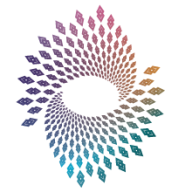Understanding the Science of Coaching: Harvard Medical School Maps Science to Co-Active Coaching
- POSTED ON JULY 20, 2022

Science has revealed that when the brain is influenced by the chemicals associated with stress, it is less creative and less able to think of long-term solutions. Co-Active principles offer a variety of ways to help individuals move out of a reactive state and create new possibilities for moving forward with tools and skills that can be linked to neuroscientifically proven stress-reduction techniques, right-left hemisphere integration, and neuroplasticity. Because there is no judgment or evaluation in Co-Active coaching and leadership development, the client remains open to input and is much more able to access their own unique creativity to develop solutions that move them forward.
The Co-Active Model & the Science of Coaching
According to Dr. Carol Kauffman, founder and director of the Institute of Coaching and faculty of Harvard Medical School for over 25 years, “Co-Active Training Institute (CTI) offers a gold standard of coach training, and the Co-Active model behind it is remarkably congruent with a vast body of research in positive psychology and coaching.”
“It’s exciting to see how the entire field can be uplifted by connecting science and theory with the spirit and practice of coaching,” Dr. Kauffman says. “In the future, results will continue to show how science can be mapped to CTI’s Co-Active model and their four cornerstones of coaching.”
Coaching Science: Observing Co-Active at Work
As neuroplasticity expert Norman Doidge points out, there is substantial evidence we can “rewire our brains with our thoughts.” But because the default in our brain is to go with the pathways that are already developed, it is difficult to change without focused, supported, intentional effort — and this is where the science of coaching can be applied.
A 2010 study using functional magnetic resonance imaging (fMRI) at Case Western Reserve University found that when subjects spent 30 minutes talking about their desired personal vision, the parts of their brain “associated with cognitive, perceptual, and emotional openness and better functioning” were activated. Co-Active coaching brings this sort of focus and support, integrating the art of coaching with this area of science, and making it possible to literally help a client’s brain rewire itself for greater effectiveness.
To learn more about the neuroscience of coaching, download the whitepaper.





